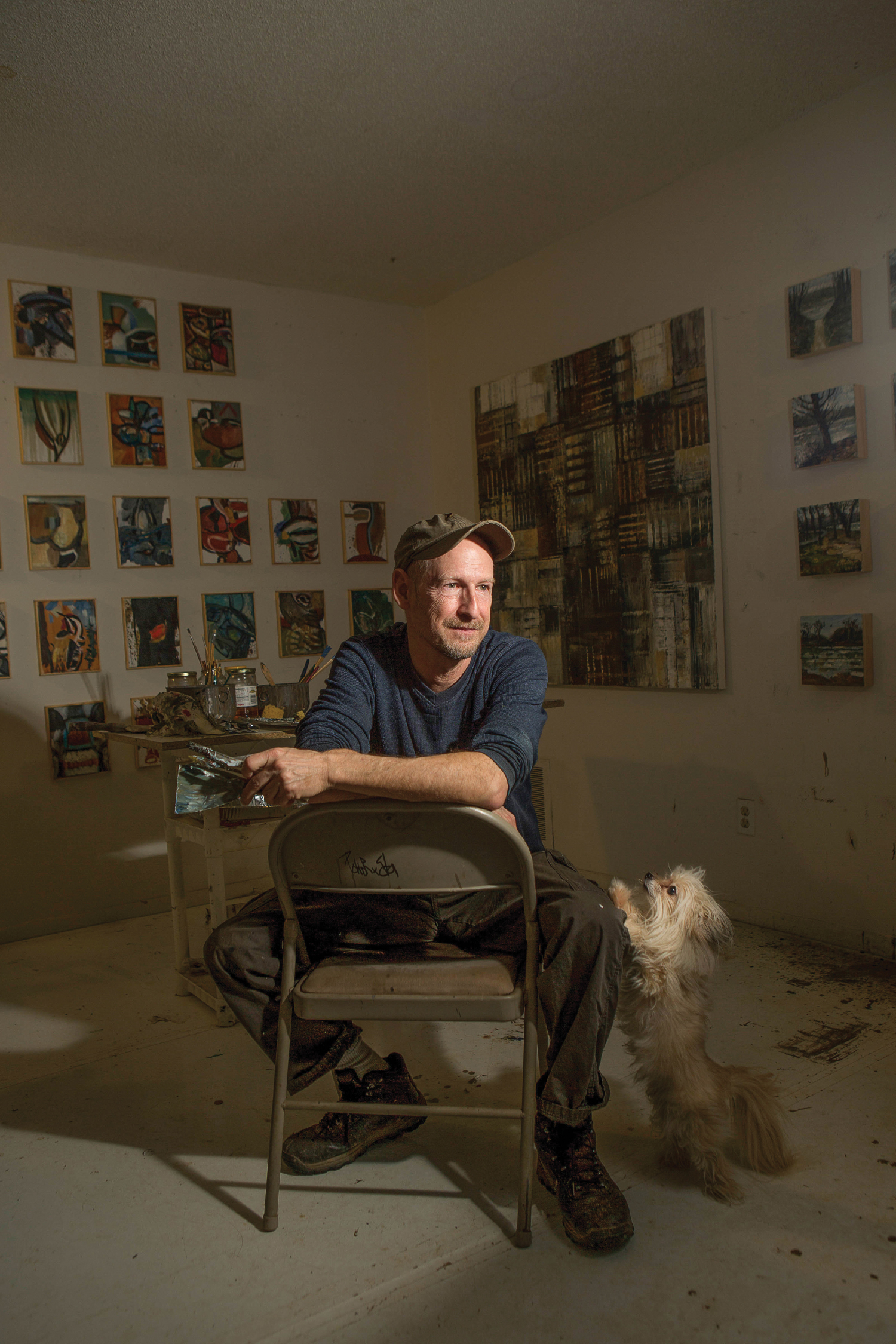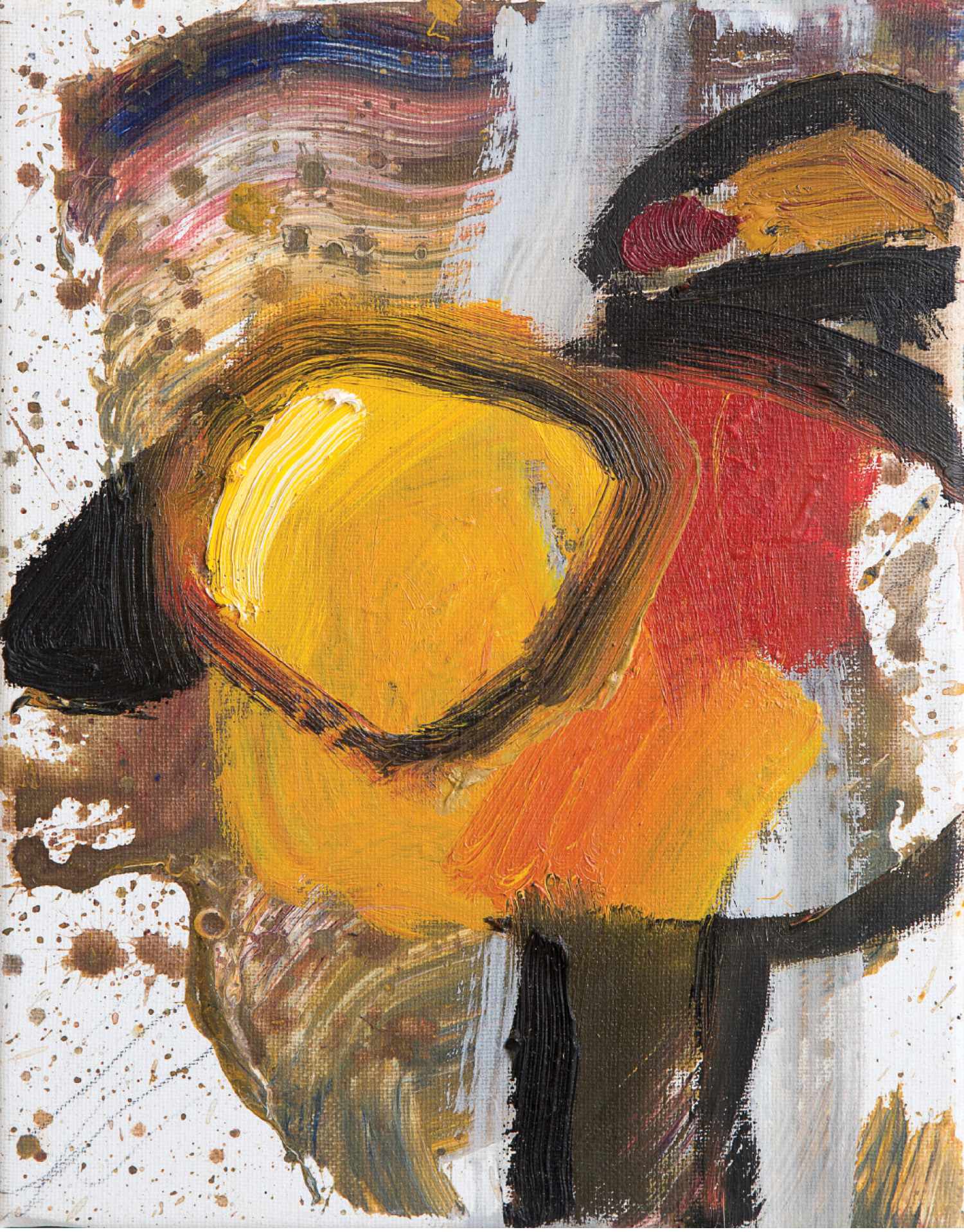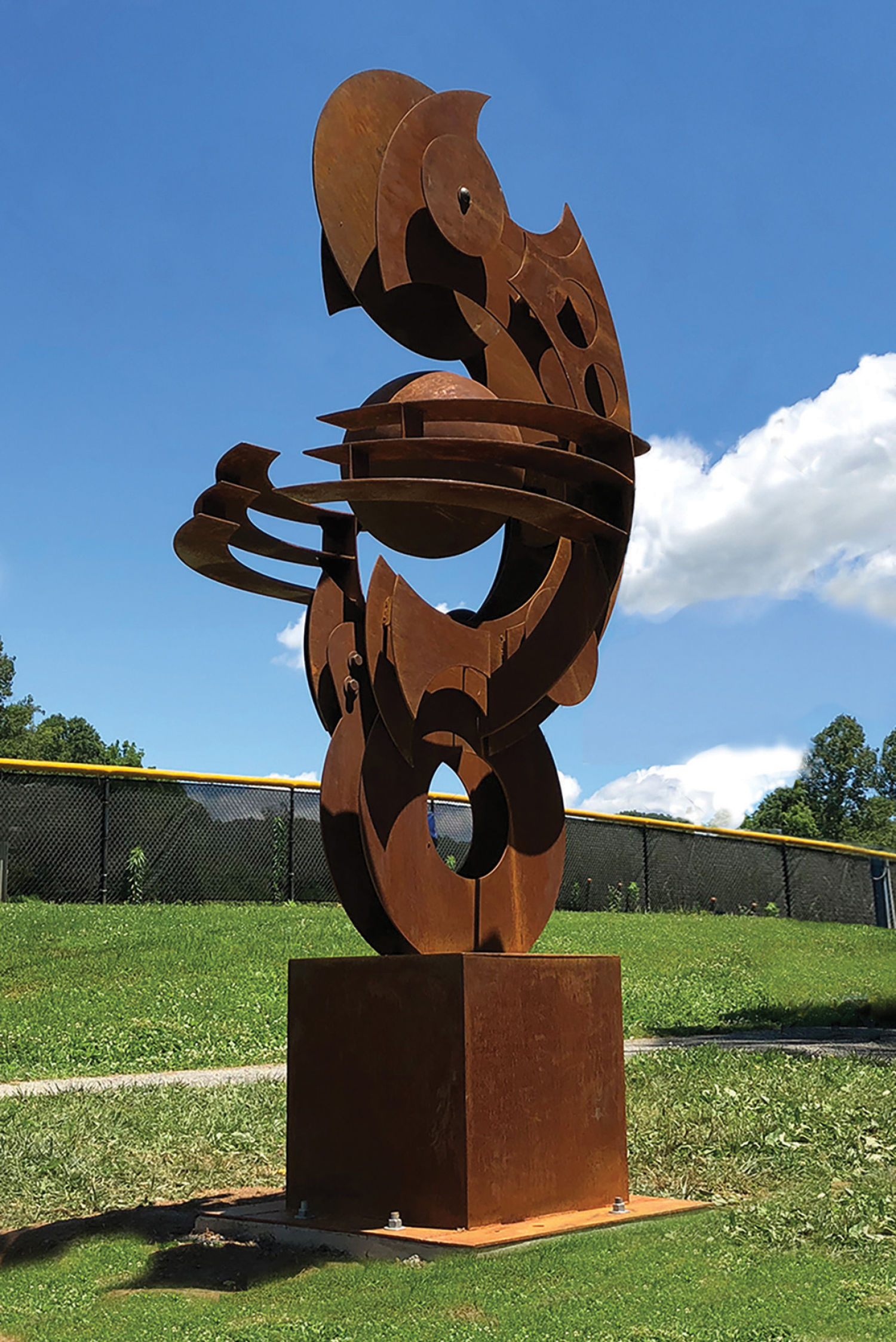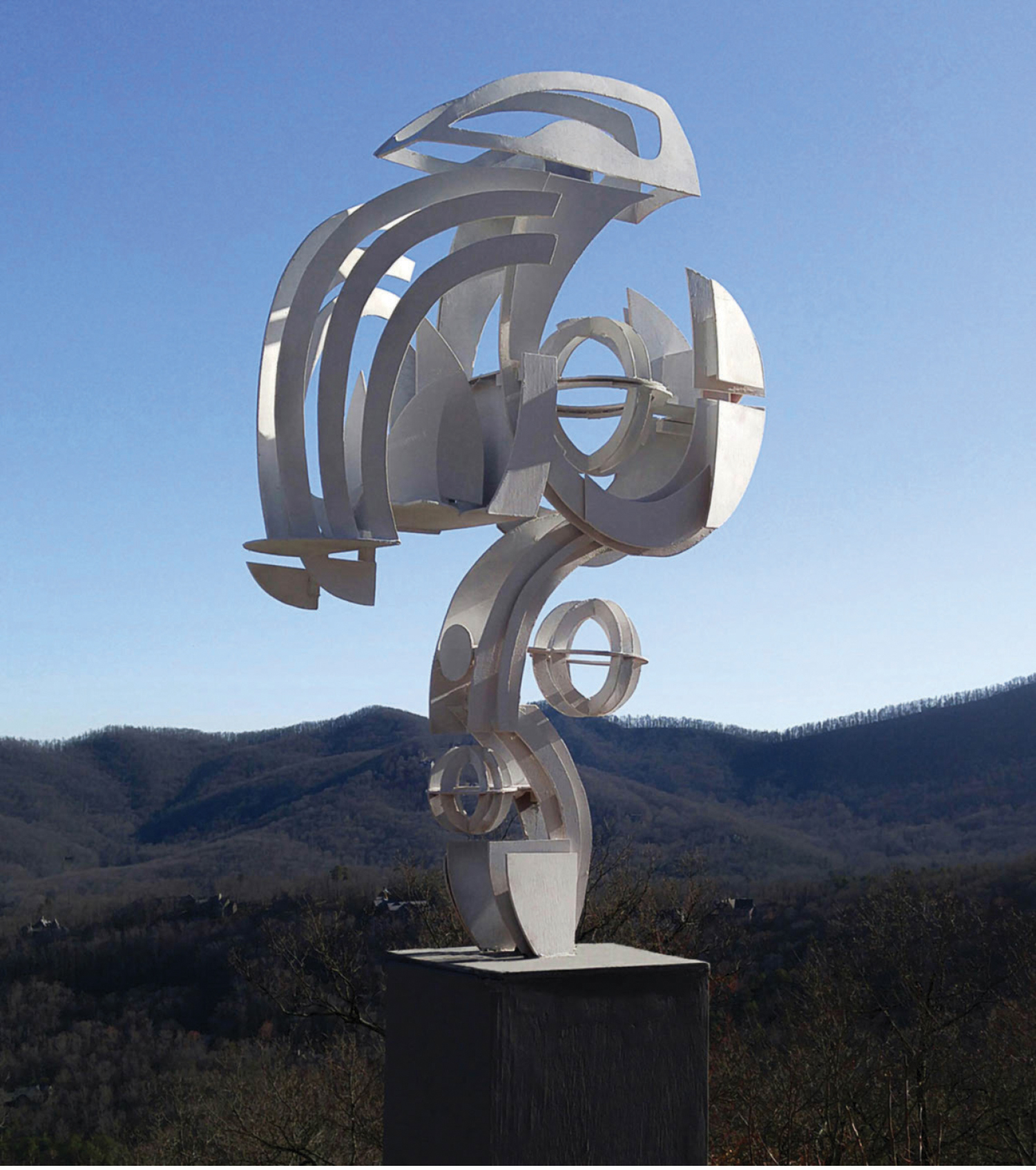
Portrait by Matt Rose
David Sheldon has loved birds ever since he was a kid. He calls them “nature’s magical faeries,” and still owns his original copy of Roger Tory Peterson’s Field Guide to the Birds of North America, with notations about birds he’d identified in the wild.
Years later, Sheldon returned to the classic book as inspiration for a series of paintings. Bird by bird, he created “small, intimate abstractions.” Freed from the restrictions of scientific accuracy, a series took wing.
“I realized I could continue to push boundaries by displaying them in bird-like murmuration patterns” — huge swarms in coordinated flight — “which make for a fun, dynamic display.” He’s still adding new birds to “the flock,” as he calls them. “I love the idea of it being a fluid, ongoing process.”



While in grad school, Sheldon interned at the Natural History Museum, where he entertained the possibility of a model-making career. While the work was fascinating, he found the pace too slow for his admitted “lack of patience.”
Around the same time, he met sculptor James Sanborn, who recruited him to assist in the construction of “Kryptos,” a large, complex sculpture installed on the grounds of the CIA’s headquarters in Langley, Virginia. “One of my main tasks was cutting out all the individual letters of the messages on the copper plates.” This, he says, predated computerized laser cutters and required many long, sweaty hours to accomplish with a saber saw.
Throughout a variety of other jobs, he continued pursuing his own paintings. His artwork eventually garnered widespread attention, especially his large-scale paintings and sculptural dioramas, which he describes as “stacked walls of aquariums filled with underwater sculptures and natural objects.”
When his family started to grow, Sheldon shifted gears for a while to making children’s books. But after moving from Brooklyn to Etowah, in rural Henderson County, in 2008, he began doing illustrations for American Backcountry, a local, nationally distributed outdoor-apparel company. Now based in South Asheville, Sheldon is also creating large-scale public sculptures.
“I see myself as a designer more than a sculptor, in the purest sense of the word. I don’t have a love of material the way a ceramicist or more traditional sculptor might,” he explains, adding, “I’m not conceptualizing through the material; I’m driven by an interest in seeing form and space play out in unique and dynamic relationships.”


Last year, Sheldon’s work “Mars Cutter” was unveiled at Madison County’s Manufacturing Art Park on the campus of Mars Hill University. It celebrates the work done by local company Advanced Superabrasives, the firm that made the cutting wheels used on the Mars Rovers.
“My interests are many, and I’d be incredibly bored sticking to one thing,” says Sheldon. “My attitude towards art-making is the same as my attitude towards life — that it’s a wonderful spiritual quest and adventure, with new surprises around every turn.”
David Sheldon, South Asheville. Sheldon sells work at Mark Bettis Studio & Gallery (123 Roberts St. in the River Arts District, markbettisart.com); he’ll have pieces at that gallery’s upcoming “828” — Five Artists’ Interpretations: Western North Carolina show from Saturday, April 13 (opening reception 5:30-7pm) through Saturday, May 11. Sheldon also exhibits at Grovewood Gallery in North Asheville (111 Grovewood Road, grovewood.com). He’s curating a show, “Beyond Knowing,” at Asheville Area Arts Council (207 Coxe Ave.) Friday, May 10 through Friday, June 21, with a reception on Friday, June 7, 5-8pm (ashevillearts.com). For more information, see
davidquentinsheldon.com.
Incredible artist!!!